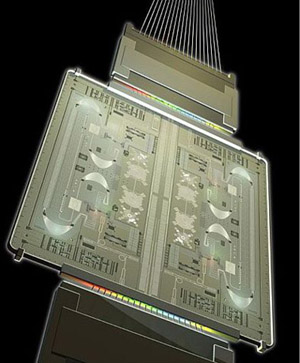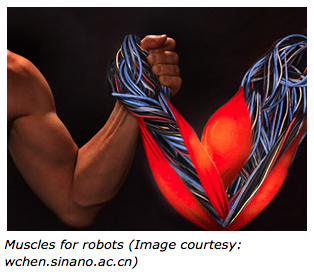[stextbox id=”info” caption=”2. Photonics for circuits”]
Research area: Photonics
Application: Photon-integrated circuits
“Advances in photonics, microwave photonics, optical nanostructures and lasers in the nanometre range could help in creating advanced optical computers; telecommunications switching, processing and transmission systems; and also extremely high-resolution applications. The intent is to use photonics to replace circuits, with lasers taking the place of electrons, and circuits being made of fibre-optic wires and mirrors,” points out Dr Borkar.
nanometre range could help in creating advanced optical computers; telecommunications switching, processing and transmission systems; and also extremely high-resolution applications. The intent is to use photonics to replace circuits, with lasers taking the place of electrons, and circuits being made of fibre-optic wires and mirrors,” points out Dr Borkar.
Photon-integrated circuits (PICs) are coming up today, thanks to advances in optical science research. These have several major advantages compared to traditional electronic circuits. One is higher bandwidth than copper global interconnects. Next is higher immunity to interference than radio-frequency (RF) interconnects. Third is compatibility with current complementary metal-oxide semiconductor (CMOS) fabrication technologies compared to other technologies like carbon nano-tube (CNT) interconnects.
Many chip makers are seriously exploring how copper interconnections can be replaced with optical connections. However, some challenges remain to be overcome before this vision is realised—and these are current points of photonic and electronic researches.
Considering the energy used by laser sources, the energy/bit of PICs is likely to be lower. Then, there is the question of how to achieve very high density (which requires very short wavelengths) without undermining the performance—plasmonics is being researched to solve this issue. Another problem is the absence of photonic memory, due to which switching in nodes has to be done in the electronic domain resulting in slower, costlier and power-hungry systems. Solutions like burst packet switching are coming up to solve this issue.
“One major challenge is the boundary and interface with electronics systems. It will take a significant time period to transition from electronic to photonic systems, so the two will have to interface with each other,” says Dr Borkar.
[/stextbox]
[stextbox id=”info” caption=”3. Muscles for robots”]
Research areas: Chemistry, materials sciences
Applications: Muscle-like actuators for robots, micro- and nano-systems
Advances in synthetic organic chemistry are helping to create muscle-like actuators for autonomous robotics, artificial organs, and micro or nano-system fabrication.
One recent example is the eye-like technology developed by Georgia Tech. Researchers used piezoelectric materials to replicate the muscle motion of the human eye to control robotic camera systems. This could be used to improve the movement of robots, MRI-guided surgery, etc.
used piezoelectric materials to replicate the muscle motion of the human eye to control robotic camera systems. This could be used to improve the movement of robots, MRI-guided surgery, etc.
Similarly, a team at the University of Texas in Dallas has developed artificial muscles made of nanotech yarns (of carbon nanotubes) infused with paraffin wax, which can lift more than 100,000 times their own weight and generate 85 times more mechanical power than a natural muscle of comparable size. These yarns could be used for making robots, micro-motors, mixers for micro-fluidic circuits, tunable optical systems, micro-valves, positioners and so on.
[/stextbox]






